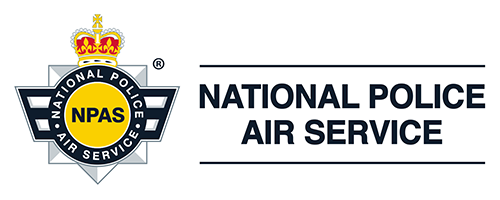Safety management
Our robust Safety Management System (SMS) includes all the necessary organisational structures, accountabilities, polices and procedures to reduce, control and maintain risk to an As Low As Reasonably Practicable (ALARP) level.
This approach has built a strong safety culture throughout NPAS. All safety issues are reported, tracked and analysed through Centrik – an all-in-one computerised management system.
Along with a six-monthly internal Safety Review Board, chaired by the NPAS Accountable Manager, and Safety Action Group events involving staff representatives from across the service, we subscribed to the following national safety groups in 2023/24.
- Civil Aviation Authority Onshore Safety Leadership Group
- UK Laser Safety Working Group
- UK Flight Safety Committee
- Civil Aviation Authority Skywise
- British Helicopter Association Technical Committee
- Blue Light Aviation Safety Team
Managing safety
The Civil Authority (CAA) requires evidence that any risks faced by our service are suitably monitored and managed.
The top five risks are declared and reviewed by the CAA every six months.
In 2023/24, these were:
- Drones-related airborne conflict
- Organisational change affecting performance
- Reduction in performance resulting from human error
- Maintenance errors on the aircraft or equipment
- Over-reliance on single points of failure, such as limited staff able to carry out critical roles
The CAA independently assessed NPAS throughout the year.
This included auditing a selection of base locations and the NPAS headquarters.
The HQ CAA audit took place in August 2023. The CAA concluded that NPAS is operating safely with effective management by the Accountable Manager and Nominated Form 4 post-holders.
The CAA further reported that the Management of Change (MoC) process, designed and implemented by NPAS, was ‘industry-leading’.
Serious incidents
We received 1,007 safety reports from staff into the NPAS Safety Management System (SMS) in 2023/24.
Of these, 168 were assessed to be Mandatory Occurrence Reports (MORs), requiring submission to the Civil Aviation Authority.
Of the 168 MORs, 77 were laser attacks against NPAS aircraft.
NPAS aircraft incur significantly more laser strikes than any other helicopters flying in England and Wales, with 85% of all rotary laser strikes being conducted against our crews.
We are well supported by local police forces and will pursue prosections through the criminal justice system.
Despite this, our overall record of reportable incidents remains in line with European industry expectations, as measured by the European Union Aviation Safety Agency.
However, with the increased use of drones, commercially and by hobbyists and the emergency services, airspace is becoming more congested year on year, presenting an ever growing risk to our aircraft crews.
Case study
In August 2023, one of our aircraft came into close proximity with a drone which was unlawfully operating at 1,800ft.
This was reported to the Civil Aviation Authority and local police force. The pilot was arrested for endangering an aircraft.
In January 2024, one of our aircraft unexpectedly came into close proximity with a police drone, whilst operating in the same area, searching for suspects.
We have been working with the NPCC drones team to ensure processes are robust and interoperability is achieved, with effective two-way communication.
NPAS bases have also been proactively engaging with local police drones units to share safety practices.
We independently audited the drones reporting process, which was established through the NPAS Operations Centre, to assess its effectiveness in preventing conflict between aircraft and drones in shared airspaces.
The audit concluded the process was effective.
At the same time, the NPAS Head of Futures and Innovation has been working on possible technological devices which could be used to provide better awareness for our pilots of where police drones are operating. We had 17 near-miss incidents with drones in 2023/24.
